Barrow-in-Furness
Explore hidden histories, historic photos, and things you never knew about Barrow-in-Furness from the collections and archives of Historic England.
Discover your local listed buildings and places
Introducing some of Barrow-in-Furness' most historic sites, included in the National Heritage List for England. Some of these captions have been summarised by AI. Click through for the official List entry. Skip this section and go to place by numbers
Barrow Park
Barrow
Public park to original designs of Thomas Mawson, amended by the Borough Surveyor and mostly laid out between 1908 and 1915. It is roughly an S-plan and comprises a total of 18.5 ha.
Explore more
Search for more listed placesBarrow-in-Furness through time
This timeline shows the first period of use for buildings and places on the National Heritage List for England, just one of the details recorded for every list entry. Click around to see how Barrow-in-Furness changes over time. Skip this section and go to aerial photos
Post medieval AD 1540 to AD 1901
The Post-Medieval period brought seismic changes to life in England, with religious reformation leading to the democratization of worship and the destruction of hundreds of religious houses.
In parallel, there was a huge expansion of scientific study and enlightenment that permanently altered the nation's social structure and landscape. Industrialization and mass production lead to wider global trade, emigration, and immigration.
20th century AD 1901 to AD 2000
The 20th century saw an incredible expansion of England's transport networks, with suburban growth shadowing rapid infrastructural expansion. The establishment of state schools, hospitals, and modern technical colleges, with new architectural styles, radically changed the appearance of towns and cities.
Two catastrophic world wars and the 1918 pandemic also brought unprecedented change, altering England's built environment and social structures forever.
Post medieval AD 1540 to AD 1901
The Post-Medieval period brought seismic changes to life in England, with religious reformation leading to the democratization of worship and the destruction of hundreds of religious houses.
In parallel, there was a huge expansion of scientific study and enlightenment that permanently altered the nation's social structure and landscape. Industrialization and mass production lead to wider global trade, emigration, and immigration.
20th century AD 1901 to AD 2000
The 20th century saw an incredible expansion of England's transport networks, with suburban growth shadowing rapid infrastructural expansion. The establishment of state schools, hospitals, and modern technical colleges, with new architectural styles, radically changed the appearance of towns and cities.
Two catastrophic world wars and the 1918 pandemic also brought unprecedented change, altering England's built environment and social structures forever.
Aerial photos of Barrow-in-Furness
Aerial photography helps reveal secrets of England's changing landscapes that are impossible to see from the ground. Skip this section and go to archive images
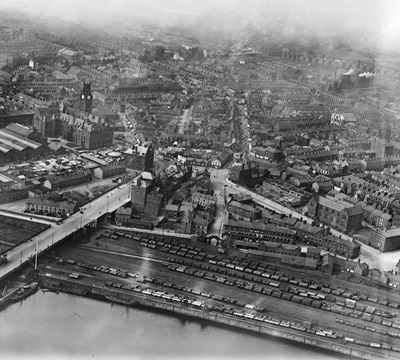
Barrow-In-Furness
Schneider Square, Barrow-in-Furness, 1920

Barrow-In-Furness
The town centre, Barrow-In-Furness, 1925
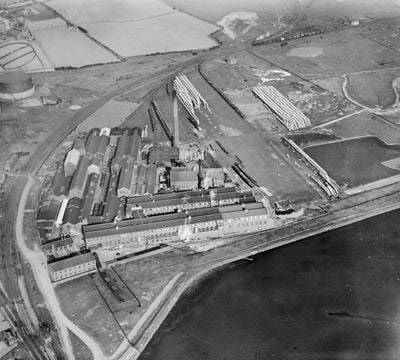
Barrow-In-Furness
The Barrow Paper Mills Works and Cavendish Dock, Barrow-in-Furness, 1929

Barrow-In-Furness
The Barrow Paper Mills Works and Cavendish Dock, Barrow-in-Furness, 1929
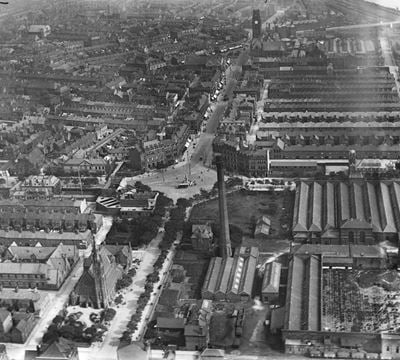
Barrow-In-Furness
Ramsden Square, Barrow-in-Furness, 1920
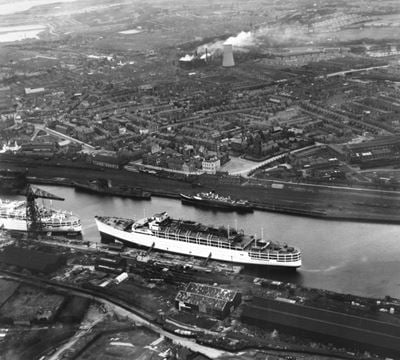
Barrow-In-Furness
SS Himalaya moored in Buccleuch Dock, St George's Square and the town, Barrow-in-Furness, 1948
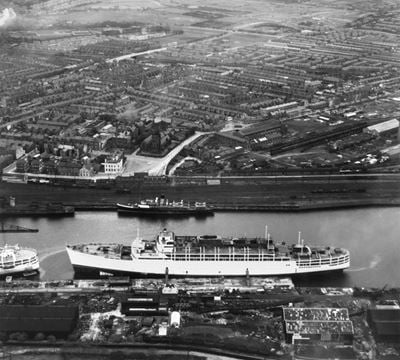
Barrow-In-Furness
SS Himalaya moored in Buccleuch Dock, St George's Square and environs, Barrow-in-Furness, 1948
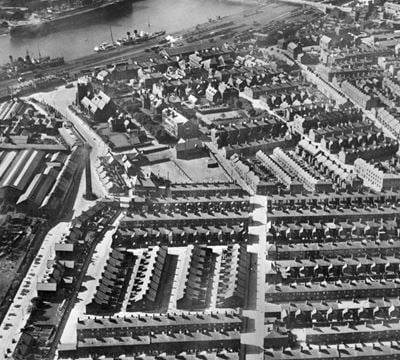
Barrow-In-Furness
Lumley Street and environs, Barrow-In-Furness, 1925

Barrow-In-Furness
General view over the town, Barrow-in-Furness, 1920

Barrow-In-Furness
The Town Hall and markets, Barrow-in-Furness, 1920
Barrow-in-Furness in the Historic England Archive
The Historic England Archive cares for over 15 million images, dating from the 1850s to the present day. Discover stunning images of Barrow-in-Furness' past. Skip this section and go to stories about heritage
London, Midland and Scottish Railway Company
Barrow-In-Furness, Cumbria
Date created: 24 Apr 1892
A view looking across the cloister garth at Furness Abbey, towards the ruins of the crossing of the church and the north claustral walk
London, Midland and Scottish Railway Company
Barrow-In-Furness, Cumbria
Date created: 24 Apr 1892
A man standing amongst the ruins of what was formerly the nave of the church at Furness Abbey, looking towards the remains of the crossing and north...
Alfred Newton and Sons
Barrow-In-Furness, Cumbria
Date created: 1898
VIEW FROM NAVE TO EAST SHOWING CROSSING AND TRANSEPT WALLS
London, Midland and Scottish Railway Company
Barrow-In-Furness, Cumbria
Date created: 20 Sep 1892
A view looking through an arch at Furness Abbey, showing a man posing by the railings
London, Midland and Scottish Railway Company
Barrow-In-Furness, Cumbria
Date created: 20 Sep 1892
The canopied sedilia in the presbytery of the church at Furness Abbey
London, Midland and Scottish Railway Company
Barrow-In-Furness, Cumbria
Date created: 20 Sep 1892
The interior of the roofless Chapter House at Furness Abbey
Alfred Newton and Sons
Barrow-In-Furness, Cumbria
Date created: 1896 - 1920
GENERAL VIEW OF SEDILIA IN THE PRESBYTERY
London, Midland and Scottish Railway Company
Barrow-In-Furness, Cumbria
Date created: 20 Sep 1892
The entrance to the Chapter House at Furness Abbey, viewed from what was formerly the building's interior
London, Midland and Scottish Railway Company
Barrow-In-Furness, Cumbria
Date created: 1886
The remains of the north transept and crossing of Furness Abbey viewed from the nave
Stories about heritage in your local area
Historic England publishes news, blogs, research, videos, and podcasts celebrating England's rich heritage. Discover the stories we have about Barrow-in-Furness. Skip this section and go to education
The Silent Service: Britain’s Nuclear Submarines
Many 20th century military sites survive around the country, and a number of these sites are protected due to their special architectural or historic...
Historic Places Panel’s Recommendations For Barrow Welcomed
Mentions Barrow-in-Furness
Team Barrow has welcomed the recommendations of the Historic Places Panel to guide the £200 million transformation of Barrow.
Five New Historic England Commissioners Appointed (2022)
Mentions Barrow-in-Furness
Nairita Chakraborty, Jane, Lady Gibson,David Laing, Sir Jonathan Marsden KCVO, FSA andRobert Sackville-West are appointed for a four-year term.
Historic England Highlights Captivating Heritage Sites Listed in 2021
Mentions Barrow-in-Furness
Highlights from over 400 historic places which have been added to or amended on the National Heritage List for England in 2021.
Historic England Launches Immersive Sound Walks Capturing the Nation's High Streets
Mentions Barrow-in-Furness
Contemporary artists and Sound UK have created ‘High Street Sound Walks’ - new audio experiences for six English high streets.
Prototype for The Royal Navy’s First Long-Range Diesel-Powered Submarines Protected
Mentions Barrow-in-Furness
HMS/m D1, launched in 1908 and commissioned in September 1909, was a significant development on the C-class submarine, being larger and more powerful.
Oldest German U-Boat and Earliest U-Boat Casualty of the First World War Protected
Mentions Barrow-in-Furness
U-8, the first victim of the FWW Royal Navy's Dover Patrol sunk in English territorial waters, given protection as a Protected Historic Wreck site.
Barrow-in-Furness' social history through photos
Over 10,000 images from the Historic England Archive have been specially selected and re-captioned for teachers, students, and anyone who wants to learn more about their local area. Skip this section and go to grant-aided places
Tenements, Sloop Street, Barrow Island, Barrow in Furness, Cumbria
Period: Victorian (1837 - 1901)
This tenement block was built in 1881-84 facing Ramsden Dock Road.
Tenements, Sloop Street, Barrow Island, Barrow in Furness, Cumbria
Technical School, Abbey Road, Barrow in Furness, Cumbria
Period: Edwardian (1902 - 1913)
The technical school was built for Barrow Corporation in 1900-1903.
Technical School, Abbey Road, Barrow in Furness, Cumbria
Statue of Henry Schneider, Duke Street, Barrow in Furness, Cumbria
Period: Victorian (1837 - 1901)
This statue of Henry Schneider was put up in 1891. The sculptor was Percy Wood.
Statue of Henry Schneider, Duke Street, Barrow in Furness, Cumbria
Shipyard Buildings, Barrow in Furness, Cumbria
Period: Victorian (1837 - 1901)
These buildings are dated 1872 and had large additions around 1900.
Shipyard Buildings, Barrow in Furness, Cumbria
Parade Street, Barrow in Furness, Cumbria
Period: Victorian (1837 - 1901)
A typical row of Victorian red brick terraced houses fronting directly onto the street
Parade Street, Barrow in Furness, Cumbria
Tags
Old Schoolhouse, Promenade, Barrow in Furness, Cumbria
Period: Victorian (1837 - 1901)
This school dates back to 1856.
Old Schoolhouse, Promenade, Barrow in Furness, Cumbria
No's 2-10, Salthouse Road, Barrow in Furness, Cumbria
Period: Victorian (1837 - 1901)
This terrace of 9 cottages was built in 1846 for the Furness Railway Company to house their workers.
No's 2-10, Salthouse Road, Barrow in Furness, Cumbria
Graving Dock, North Road, Barrow in Furness, Cumbria
Period: Victorian (1837 - 1901)
This graving dock was opened on the 1st August 1872. It measures 500x60 feet (approx 150x18m) and has its entrance from the Walney Channel.
Graving Dock, North Road, Barrow in Furness, Cumbria
Discover more
Ready for more local stories? Take a look at these other places nearby


